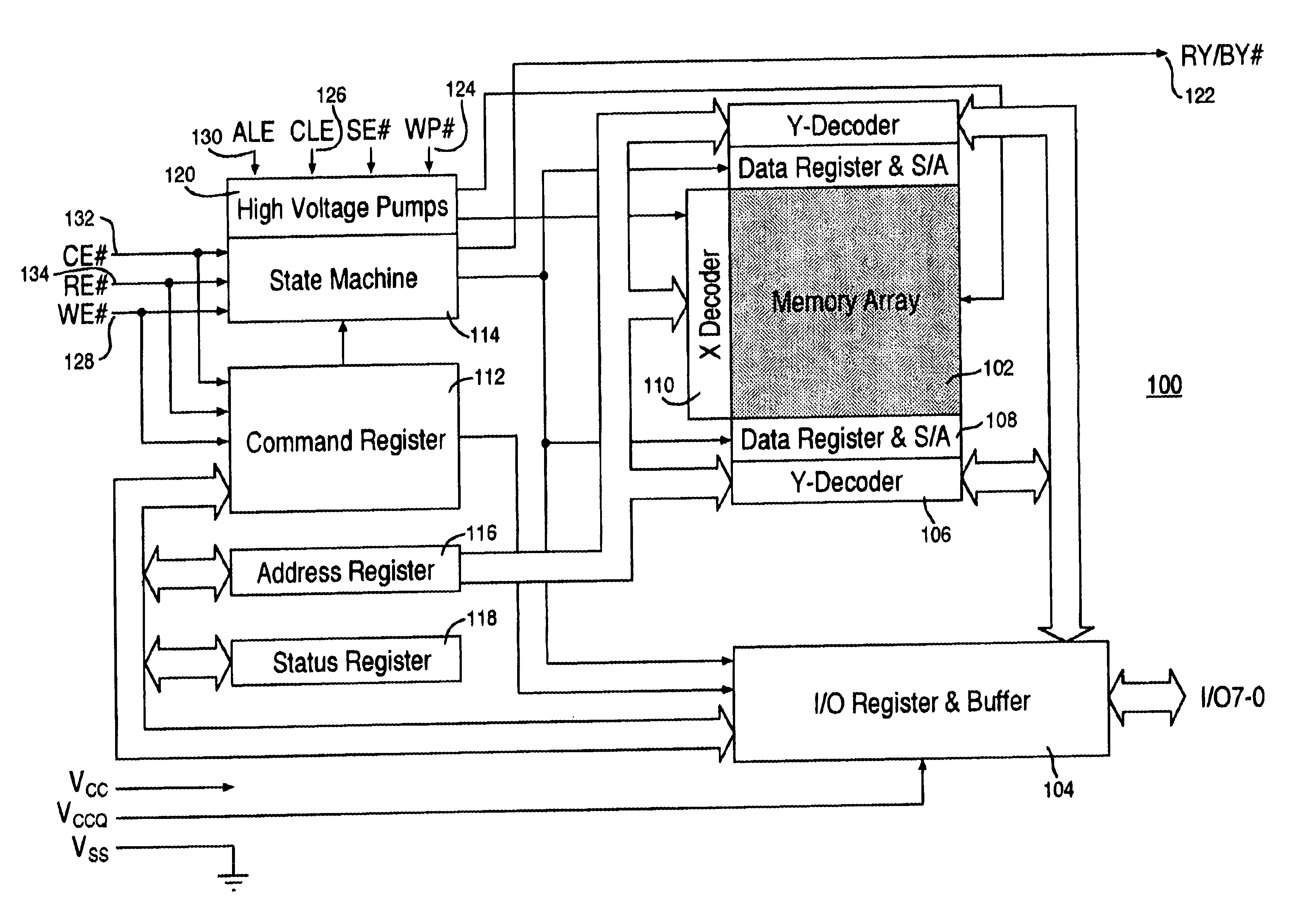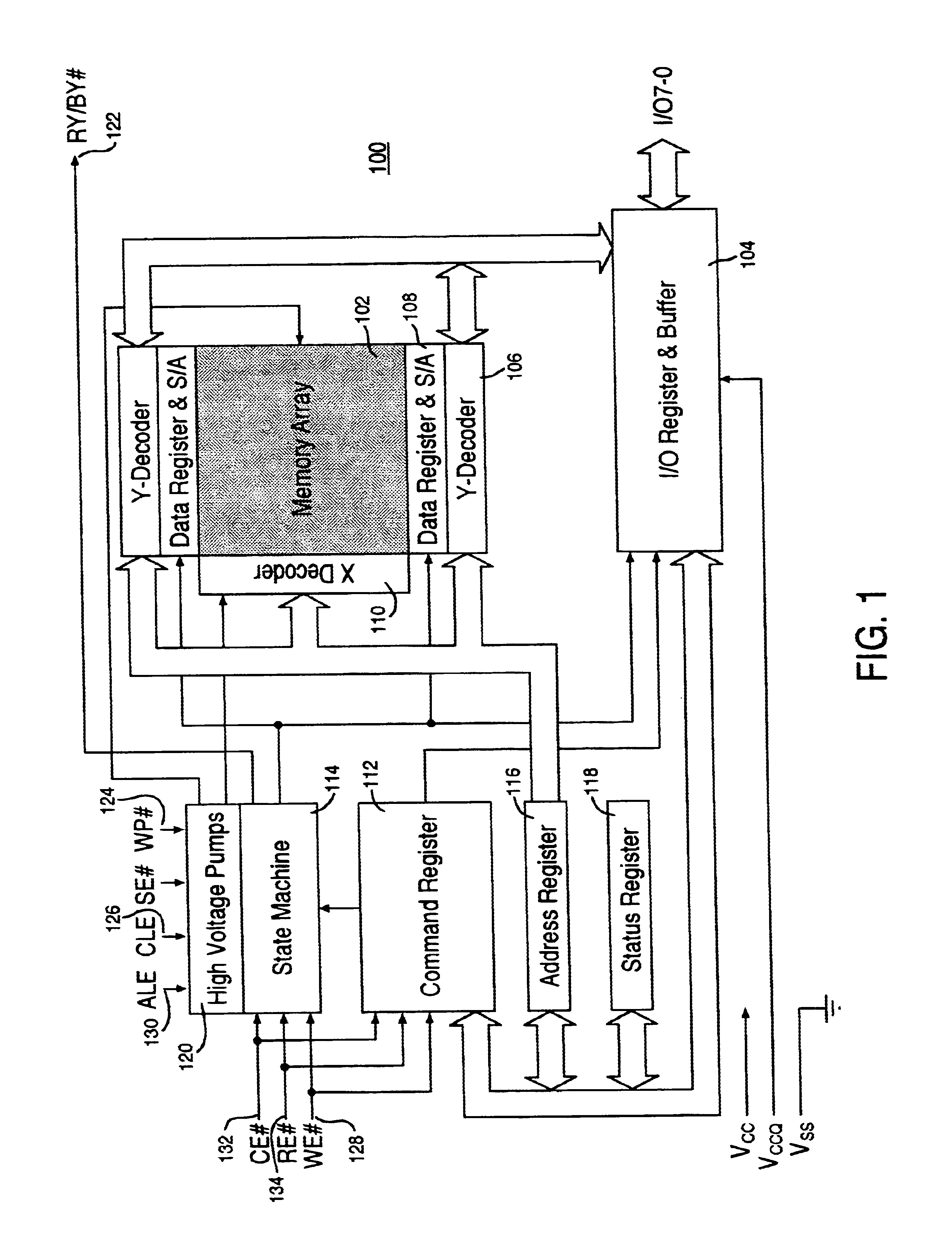Ascending staircase read technique for a multilevel cell NAND flash memory device
a multi-level cell, flash memory technology, applied in the direction of digital storage, static storage, instruments, etc., can solve the problem of generally more complex manufacturing and operation of nonvolatile memory
- Summary
- Abstract
- Description
- Claims
- Application Information
AI Technical Summary
Problems solved by technology
Method used
Image
Examples
Embodiment Construction
Referring now to the drawing, FIG. 1 shows a block diagram of a memory device 100. The memory device in the illustrated embodiment is a NAND flash memory. However, in other embodiments, the memory device 100 may be any other suitable type of volatile memory such as random access memory (RAM) including static or dynamic RAM or nonvolatile memory such as EEPROM. Further, the memory device 100 may be an embedded memory circuit within another integrated circuit or device containing other circuitry, such as logic. As a flash memory, the memory device 100 may be written or programmed with data, read to retrieve the stored data, and erased to clear the memory device on a block-by-block basis.
In the illustrated embodiment, the memory device 100 includes a memory cell array 102, an input / output (I / O) register, 104, one or more Y-decoders 106, one or more data register sense amplifier blocks 108 and one or more X-decoders 110. Further, the memory device 100 includes a command register 112, a ...
PUM
 Login to View More
Login to View More Abstract
Description
Claims
Application Information
 Login to View More
Login to View More - R&D
- Intellectual Property
- Life Sciences
- Materials
- Tech Scout
- Unparalleled Data Quality
- Higher Quality Content
- 60% Fewer Hallucinations
Browse by: Latest US Patents, China's latest patents, Technical Efficacy Thesaurus, Application Domain, Technology Topic, Popular Technical Reports.
© 2025 PatSnap. All rights reserved.Legal|Privacy policy|Modern Slavery Act Transparency Statement|Sitemap|About US| Contact US: help@patsnap.com



